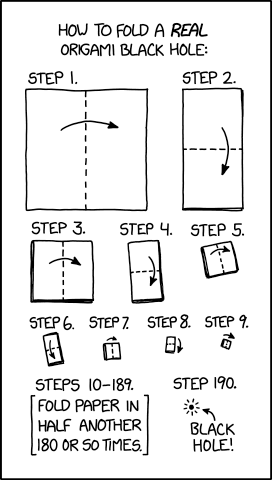Saturday Morning Breakfast Plurals
SMBC from a couple of days ago:

Read the rest of this entry »
SMBC from a couple of days ago:

Read the rest of this entry »
I am the proud possessor of the complete run of Mangajin (pun for "magazine") from #1-#70 (1988-1997).
 |
Mangajin was the brainchild of Vaughan P. Simmons, whom I had conversations with at several meetings of the Association for Asian Studies (AAS) and corresponded with for a dozen years. I have utmost respect for him as someone who had the vision and fortitude to make a truly effective pedagogical tool for learning Japanese a reality.
I dare say that I learned more Japanese language from Mangajin than from any other single source — just as I learned more Mandarin from Guóyǔ rìbào 國語日報 (Mandarin Daily), the Republic of China newspaper that had furigana-like bopomofo rubi phonetic annotations for all hanzi, than from any other single source.
Read the rest of this entry »
Today's SMBC:

The mouseover title: "If you mix beer and oatmeal, it's Frat Brose."
Read the rest of this entry »
A recent xkcd:

Mouseover title: "AAAAAA A ÃA̧AȂA̦ ǍÅÂÃĀÁȂ AAAAAAA!"
Read the rest of this entry »
Yesterday's Frazz:
Caulfield's joke illustrates several interesting linguistic points.
Read the rest of this entry »
Well, approximately as much as lexicography does…
The current Dinosaur Comics:
Read the rest of this entry »

Mouseover title: "You may notice the first half of these instructions are similar to the instructions for a working nuclear fusion device. After the first few dozen steps, be sure to press down firmly and fold quickly to overcome fusion pressure."
Read the rest of this entry »
Benjamin Weissman, Jan Englelen, Lena Thamsen, & Neil Cohn, "Compositional Affordances of Emoji Sequences", 12/19/2024:
Abstract: Emoji have become ubiquitous in digital communication, and while research has explored how emoji communicate meaning, relatively little work has investigated the affordances of such meaning-making processes. We here investigate the constraints of emoji by testing participant preferences for emoji combinations, comparing linearly sequenced, “language-like” emoji strings to more “picture-like” analog representations of the same two emoji. Participants deemed the picture-like combinations more comprehensible and were faster to respond to them compared to the sequential emoji strings. This suggests that while in-line sequences of emoji are on the whole interpretable, combining them in a linear, side-by-side, word-like way may be relatively unnatural for the combinatorial affordances of the graphic modality.
Read the rest of this entry »